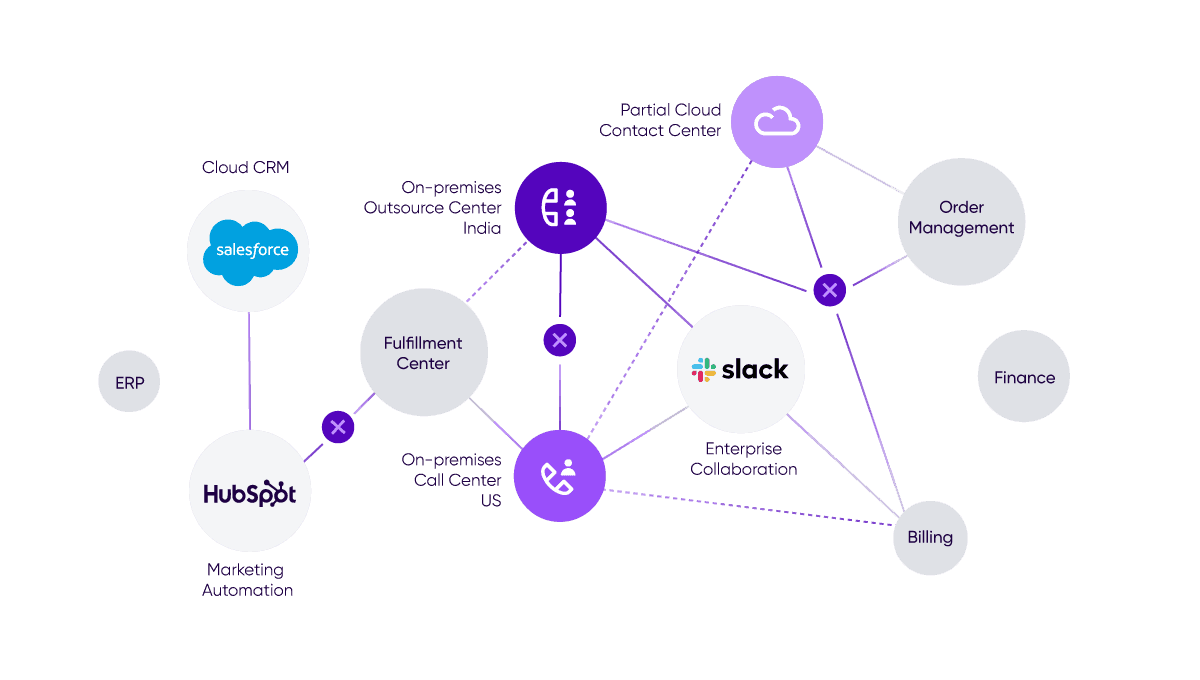Build the business case for a cloud contact center: A three-step guide to getting started

By Kevin McNulty
0 min read

Companies with on-premises contact centers can’t afford to wait any longer to move to the cloud.
Making the business case for a cloud contact center can be more challenging than you might initially suspect. Often, the benefits of the cloud seem obvious—speed, flexibility, scalability—but many organizations struggle to quantify those advantages accurately.
Many of the variables are future looking and can be difficult to accurately forecast. And you will also have to make your business case to multiple stakeholders with varying degrees of sophistication and influence—all coming to the table with their own assumptions.
It can feel a bit overwhelming to get started. There’s a lot of information that needs to be collected and analyzed, but a few practical steps can help you create an effective strategy and streamline the overall process.
Step 1: Know what’s driving you.
In my experience, it’s important to have a firm grip on what’s driving your organization to the cloud, as this can have a significant impact on the type of business case you build. Organizations often have multiple business drivers, but there are generally one or two that are paramount, and they can be lumped under three broad headers—an external market factor, system limitations and contracts, and competitive pressure.
Over the last year, many contact centers were driven to the cloud because of COVID-19. There was a huge cost for any company that did not adapt to this ubiquitous, external market factor. While these types of events typically do not manifest as global pandemics, they do happen frequently (e.g., new laws and regulations, changing consumer habits, politics, terrorism, etc.) and there is always a higher cost if nothing is done to adapt.
IT system limitations and contracts are another common driver to the cloud. When contracts expire or access to data becomes more vital, organizations have to make a decision. It’s important to remember, however, that even though there’s a forcing function to decide with an IT event, it doesn’t necessarily mean you have to change. You might decide you can live with slow data synchronization for another year or a bad user experience, but it will benefit you to have a firm grasp on any opportunity costs involved in delaying your move.
Competitive pressure is the third main driver. Organizations living on legacy technology often find themselves slower to respond to changing consumer habits or new market opportunities. This is particularly true in the contact center space, where customer service is often riding the wave of the latest consumer communications trend. Persuasive business cases built around competitors typically have solid numbers to support future revenue opportunities.
These drivers do not have to be mutually exclusive, and often will overlap, but when building a business case it can be beneficial to begin by categorizing and prioritizing your “drivers.” Writing an executive summary of what’s driving your organization can help organize your thoughts and shed light on the information you need to collect, as well as their sources. Which brings us to step two.
Step 2: Know your audience.
A cloud contact center touches many parts of a company, and the benefits and costs can vary significantly by department. To figure out the exact stakeholders it’s often helpful to understand all the system dependencies and vulnerabilities. By understanding the upstream and downstream impacts you can pinpoint exactly which departments are involved.

Example of a contact center ecosystem and system architecture.
Without some sort of macro-level view, it can be difficult to fully grasp the number of systems and teams impacted. I highly recommend creating some sort of visualization of your contact center ecosystem to move some of your challenges out of the abstract.
While simple, a visualization such as above can help get everyone’s attention and on the same page. Once visualized, it’s clear that this type of architecture drains budgets, produces poor customer experiences, and exposes the business to risk.
Outside of IT and the contact center, some of the stakeholders you will want to consider include:
- Finance.
- Information security.
- Business continuity and risk management.
- Sales and marketing.
- Procurement.
Step 3: Know your options.
A great starting point for evaluating vendor options are analyst and peer reviews.
The Gartner Magic Quadrant reports are where I typically start any software evaluation. They provide a comprehensive overview and summary of the most relevant vendors in almost every space. Each year Gartner releases a Magic Quadrant for Contact Center as a Service (CCaaS).
Another great report is The Forrester Wave™: Contact-Center-As-A-Service (CCaaS) Providers, Q3 2020—which comes out every two years and has similar types of information.
While analyst reviews are helpful, to get a more complete picture it’s also helpful to listen to what users say. G2 Crowd provides user reviews of business software and services. It’s a great resource to get a more nuanced picture than what the analysts sometimes provide. Analysts can place a premium on a company’s vision, but that vision isn’t always aligned with day-to-day execution.
Between those two reports and G2 Crowd, you can likely whittle down your cloud contact center vendor selection to a shortlist of quality matches. This will help you collect relevant information without casting too wide a net.
The vendor selection process isn’t easy, but you can streamline the process by following these three tips:
- The more detail you can provide a vendor upfront, the better the answers you will receive and the more time you will save. Sometimes organizations are wary to ‘put their cards on the table’ when initially approaching a vendor as they feel it might put them at a disadvantage. These details, however, help vendors understand your perspective, expectations, and desired outcomes.
- Ask vendors as many questions as you can that are measurable. This will allow you to create a table to compare the different vendors you engage with based on the same criteria. Open-ended questions leave room for ambiguity, so try to avoid them as much as possible.
- Be very explicit about deal breakers and ask vendors to identify any potential problems early in the process. The best vendors understand not every deal or customer is the perfect fit, and everyone should discover impasses before they turn into problems.
Time to get started.
Most people have an intuitive grasp of what’s driving their contact center to the cloud but just haven’t had the bandwidth to start to quantify the impact and build a business case. In the wake of COVID-19, companies with on-premises contact centers can’t afford to wait any longer. There are a lot of great business case templates and ROI calculators available online that can jumpstart the process and help you define the benefits, costs, risks, available options, and opportunity costs of the cloud.
The process can seem daunting, particularly at larger organizations, but the three steps I’ve laid out above can help you define the parameters of your business case and lay the foundation to start calculating the total cost of ownership and return on investment.

Cloud contact center buyer’s kit.








